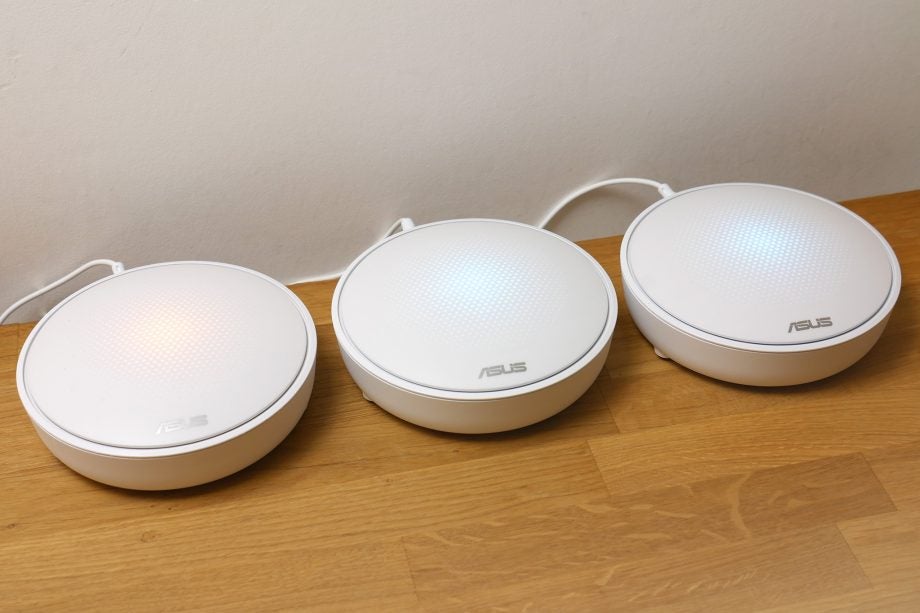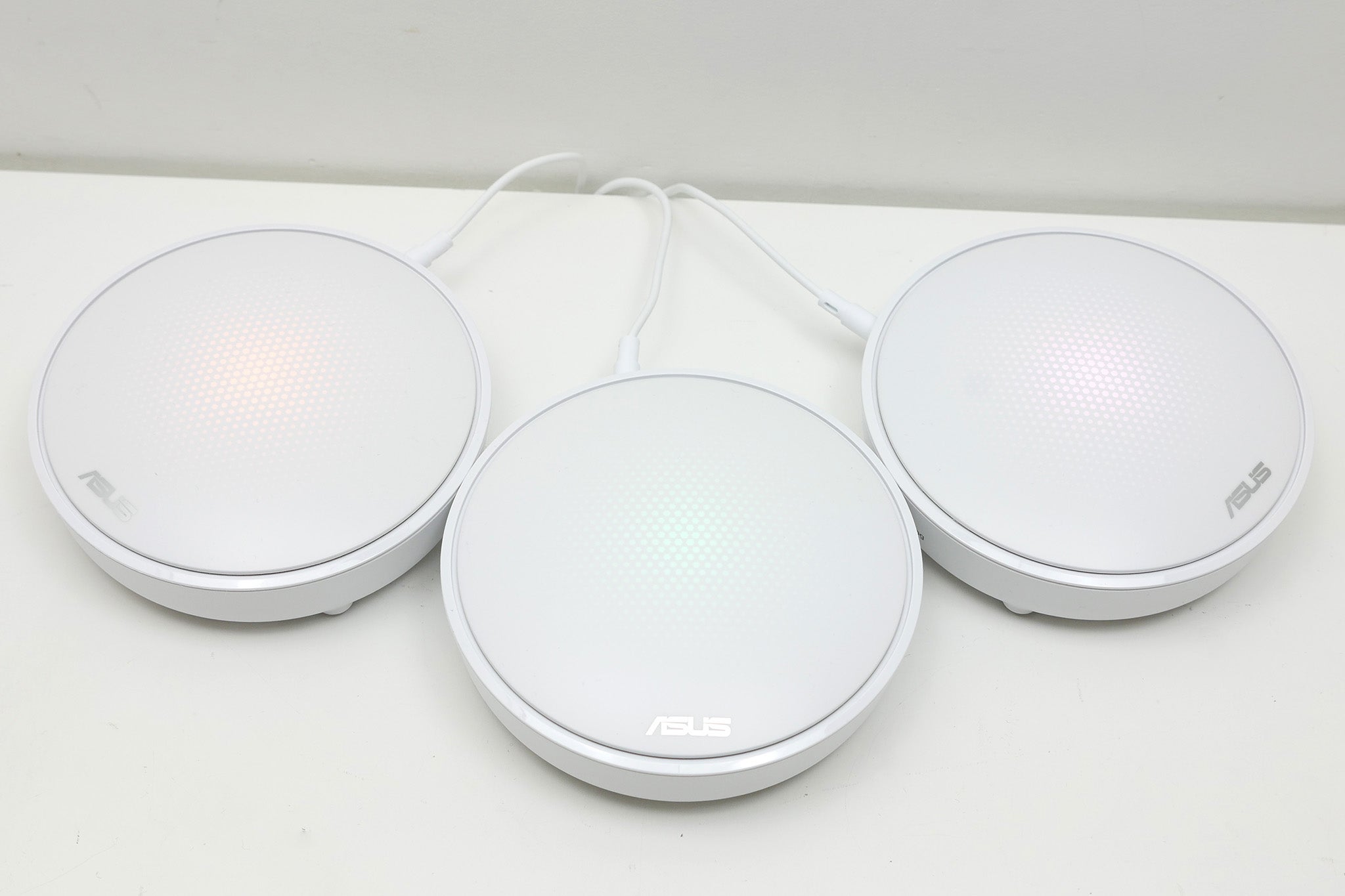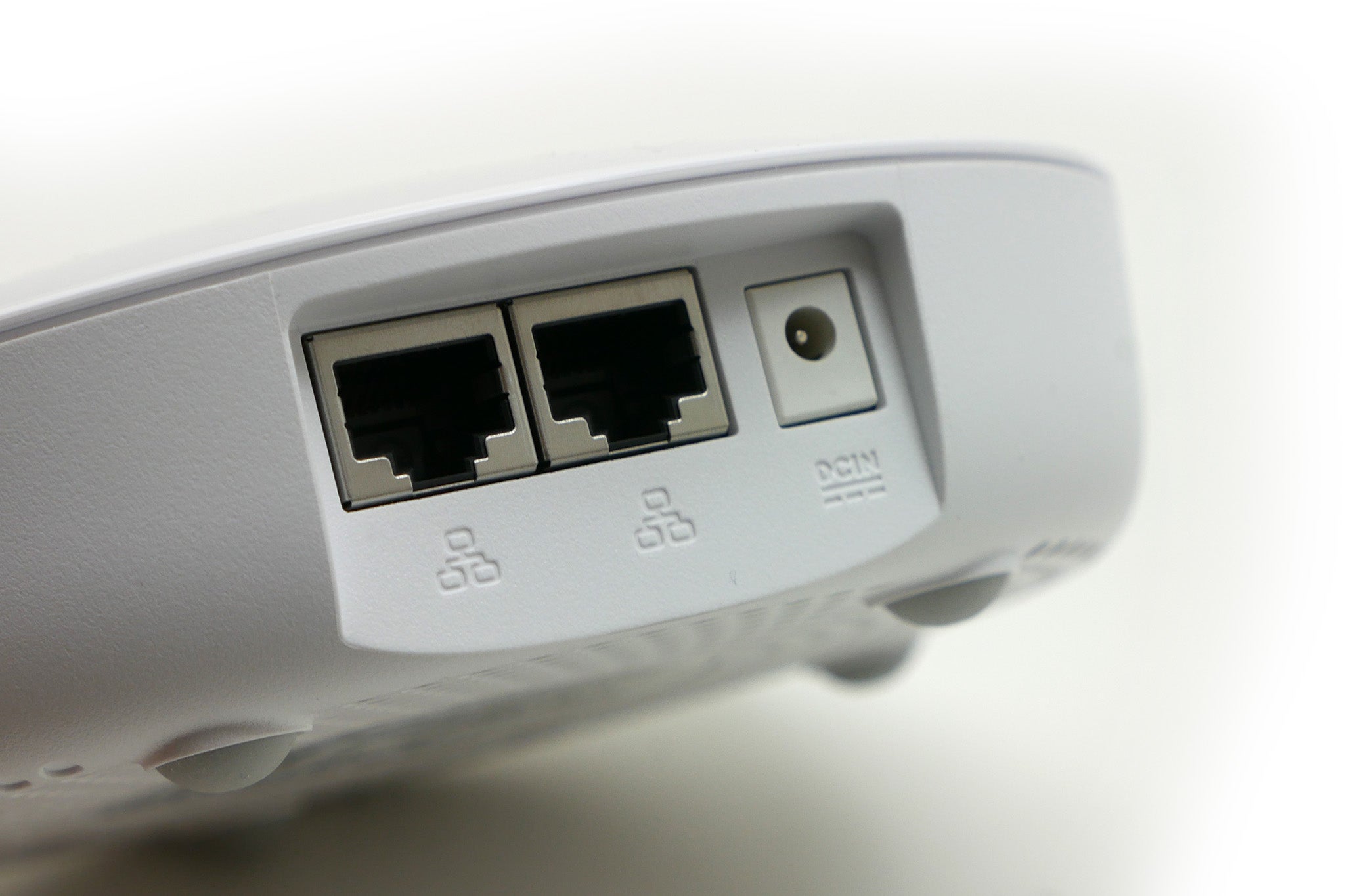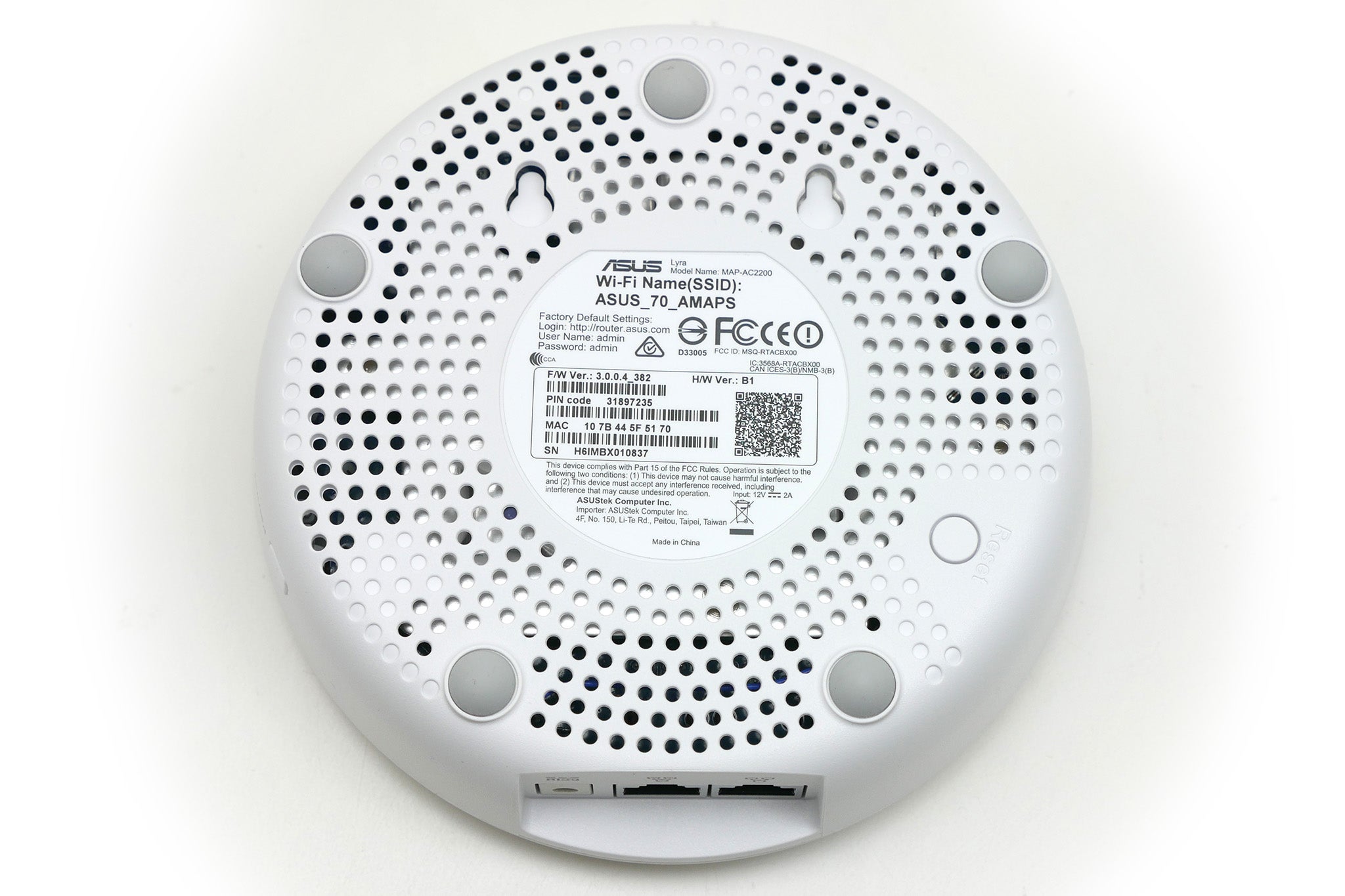Asus Lyra Review
Asus Lyra
A rock-solid mesh Wi-Fi system that's late to the party

Sections
- Page 1 Asus Lyra Review
- Page 2 Asus Lyra – Performance and Verdict Review
Verdict
Pros
- Excellent Wi-Fi range
- Versatile and powerful
- Easy to set up
Cons
- Not as fast as some mesh systems
- Wired backhaul not yet supported
Key Specifications
- Review Price: £380
- AC2200 Wi-Fi (400+867+867Mbps)
- MIMO technology
- Three-node mesh Wi-Fi system
- Two Gigabit Ethernet ports per node
- 7 x internal aerials
What is the Asus Lyra?
The Lyra is Asus’ first foray into the world of mesh routers. This whole-home Wi-Fi system includes three separate units that work together to provide a fast and reliable Wi-Fi signal throughout your home.
One of the more powerful and versatile systems available, it rivals the likes of the Linksys Velop, with each node of the system sporting a speedy tri-band AC2200 router. Each also includes a couple of Ethernet ports for wired connections, and the whole system is easy to set up using a mobile app.
Asus may not be as much of a household name as Google or Netgear, but the Lyra is well worth a look.
Asus Lyra – Design and features
This is a pricey bit of kit, so one expects to get the full premium product experience – and on the whole, the Lyra delivers. The units themselves are relatively attractive, featuring a matte white housing. The patterned top, revealed by the internal light, isn’t completely convincing (Asus was clearly going for a ‘mesh’ honecomb aesthetic for a visual pun). But you can at least switch the light off, which is handy.
Related: Mesh routers explained

They sit sturdily on a flat surface – unlike the tall, narrow Linksys Velop units – plus they can be wall-mounted with a couple of screws. This means you could have them affixed to a ceiling, for instance, making for easy cabling and an ideal location to provide good coverage.
Each unit includes two gigabit Ethernet ports. One port on your base unit will need to be plugged into your existing modem or router for a connection to the internet.

From there, all the other ports on the rest 0f the units provide a wired point of access to your network. This means you can hook up a desktop PC with Ethernet or an older TV to one of the units without having to retroactively fit Wi-Fi hardware.
There should be a third possible use for these ports, which is wired backhaul for faster speeds. However, it’s not present and there’s no sign of it appearing. The Netgear Orbi supports this, giving it the upper hand.

In terms of other physical features, there are just two more on each unit. There’s a pairing button on the side that can be used to quickly add a new node to the network, and a reset button on the underside.
Everything else key to making this Wi-Fi system work is on the inside. Each unit has a tri-band AC2200 (400+867+867Mbps) Wi-Fi system with seven internal aerials.
Despite the fact that the system consists of three units each with three Wi-Fi bands, all you ever need to worry about is one Wi-Fi signal – that’s the beauty of these mesh router systems.
On the downside, what the Asus Lyra and other mesh systems tend not to have is much in the way of extra features. Looking for the USB sharing and manual network management of a traditional router? Then you’ll have to stick to a conventional router.
You can always use the Lyra with an existing router, but if you replace your old router then it’s something to be aware of.

